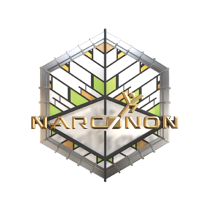National Panel Urges Changes to Addiction Screening

A surprising headline in an August 13th, 2019 issue of U.S. News reads, “All U.S. Adults Should Be Screened for Illicit Drug Use, National Panel Urges.” That came as a bit of a shock. Such an approach has never been suggested before. It says something about the condition of illicit drug use in the U.S. if the U.S. Preventive Services Task Force is recommending that all doctors screen all adults for illegal drug use.
We can’t ignore the fact that such a recommendation is somewhat controversial. It goes without saying that Americans have mixed feelings about mandatory screening.
So what’s the story behind this new release? And what else might doctors do to curb the growing drug problem?
A New Proposition
The U.S. Preventive Services Task Force is a federally appointed, independent panel. The panel is quite influential. Insurers often base their decisions on coverage for customers based on the panel’s recommendations.
“Approximately 1 in 10 Americans older than age 18 currently use illicit drugs, and illicit drug use is among the most common causes of preventable death, injury, and disability in the United States.”
Here’s where the recommendation came about. According to the U.S. Preventive Services Task Force as quoted in the U.S. News article cited earlier, “For the first time, there is enough evidence for the Task Force to recommend that primary care clinicians screen all adults for illicit drug use. … Approximately 1 in 10 Americans older than age 18 currently use illicit drugs, and illicit drug use is among the most common causes of preventable death, injury, and disability in the United States.”
The panel bases its logic in calling for nationwide screening on the evidence listed above. Drug abuse is a massive problem in the U.S., an issue that has grown far more prevalent and far more lethal than it has ever been before. Furthermore, mandatory screening could prevent some instances of misdiagnosis. An example could be the meth addict who is misdiagnosed as schizophrenic. If the doctor knew about the meth habit, the doctor would treat that, and likely hold off on a schizophrenic diagnosis.
The type of screening called for was very specific. According to the U.S. Preventive Services Task Force, the panel’s recommendations include simply suggesting that all doctors ask all of their adult patients various questions about drug use. That would include asking patients about whether or not they were using drugs, frequency of use, risks related to use, etc. Mandatory drug testing was not included as part of the panel’s recommendations.
Some agree that the panel is in the right to make the recommendations it has made. Critics of the panel suggest that such mandatory screening would violate the doctor-patient relationship, forcing a new practice on doctors and, to some extent, invading patients’ privacy.
Others criticize the panel based on the fact that doctors currently receive very little education on drug addiction and substance abuse in general. Many believe that for doctors to effectively screen patients (if that’s even the right thing to do), they would first need to become educated and informed on addiction, drug abuse, prescription drug abuse, the opioid crisis, residential treatment as an effective solution, etc.
Whether the recommendations from the U.S. Preventive Services Task Force become standard operating procedure or not remains to be seen. However, we can all agree that the addiction epidemic has spiraled out of control. We can all agree that steps need to be taken to address and curb this problem effectively.
Ethical Prescribing Trends—What Doctors Can Do

Mandatory screening may or may not help address our drug problem. It’s certainly a question for debate. One thing we can suggest that will definitely reduce the addiction epidemic is for doctors to cut back on prescribing opioid drugs. They could reduce their prescribing trends for much of the drugs that create the addiction problem.
Since about 2016, there has been a fair amount of pressure on doctors, mainly from the Centers for Disease Control and Prevention, to cut back on prescribing trends for opioid pharmaceutical drugs. The CDC released guidelines of their own, back in 2016, that strongly encouraged doctors to become far more conservative in their opioid prescribing patterns. These guidelines also acted as educational material for doctors—material that was sorely needed in the medical field.
To give a framework for how strongly the CDC was encouraging doctors to tighten the prescribing process, here are three, brief excerpts from the CDC recommendations:
- “Nonpharmacologic therapy and nonopioid pharmacologic therapy are preferred for chronic pain. Clinicians should consider opioid therapy only if expected benefits for both pain and function are anticipated to outweigh risks to the patient.”
- “Before starting opioid therapy for chronic pain, clinicians should establish treatment goals with all patients, including realistic goals for pain and function, and should consider how opioid therapy will be discontinued if benefits do not outweigh risks.“
- “Clinicians should prescribe the lowest effective dose of immediate-release opioids and should prescribe no greater quantity than needed for the expected duration of pain severe enough to require opioids. Three days or less will often be sufficient; more than seven days will rarely be needed.“
If doctors were to unilaterally reduce the numbers of opioid drugs they prescribe every year, this would reduce the amount of opioid pain-reliever drugs among the American people. The result? Fewer exposures to such medications, fewer addictions, fewer overdoses, fewer deaths.
Helping Our Loved Ones—What We Can Do
Reducing the drug crisis is not just on our medical doctors. Not by a long shot. Reducing the drug problem depends to a great extent on what we the American people do to address the issue. Here are three approaches that we can all take to curb the drug crisis:
- Prevention. Prevention involves any effort made to reduce the likelihood that people will use drugs. Prevention can include raising awareness for the harm that drug use creates, supporting law enforcement, holding marches, rallies, fundraisers, public events, and other activities which promote sober living and a drug-free community, etc. These are all efforts that help ensure people do not use drugs in the first place.
- Education. One could argue that education is a form of prevention. This approach is so crucial it deserves a category of its own. We all need to get better educated about drugs and drug addiction. The patient who begins taking potentially addictive prescription opioids at his doctor’s recommendation likely knows very little about those opioids and the types of risks they present, informed consent or not. The teen who succumbs to peer pressure and takes drugs his friend gives him likely would not do so if he knew the truth about those drugs.
- Rehabilitation. If you know someone who is struggling with a drug problem, your best shot at saving their life will come from helping them get into a residential drug and alcohol rehab. Residential drug rehabs offer the safest, most workable, and most effective approaches for getting off of drugs.
Curbing the drug problem in this country is not going to come about because of just one type of effort. This will be a hard-won victory, and it will be a victory that we will all have to work together to achieve.
Sources:
- https://www.uspreventiveservicestaskforce.org/
- https://www.usnews.com/news/health-news/articles/2019-08-13/all-us-adults-should-be-screened-for-illicit-drug-use-national-panel-urges
- https://www.cdc.gov/drugoverdose/pdf/guidelines_at-a-glance-a.pdf
Reviewed and Edited by Claire Pinelli, ICAADC, CCS, LADC, MCAP, RAS


